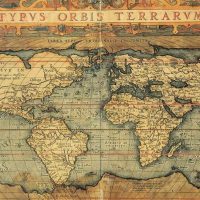Category: History Essay Examples
See our collection of history essay examples. These example essays are to help you understanding how to write a history essay. History is a fascinating puzzle with both personal and cultural significance. The past informs our lives, ideas, and expectations. Historians study the past to figure out what happened and how specific events and cultural developments affected individuals and societies. Also, see our list of history essay topics to find the one that interests you.
Solon was an important leader and lawmaker of ancient Athens, who brought political reform and stability to the region in the sixth century b.c.e. One of the Seven Wise Men of Greece, he also wrote poetry that still exists and demonstrates his philosophy. Some of the sayings attributed …
The development of thought and society in the democratic Athens of the fifth century b.c.e. and the increasing sophistication of society inspired and benefited a class of peripatetic philosopher-teachers who became known as the Sophists. There were numerous Sophists practicing their profession, and around 30 of them are …
Sophocles was one of a trilogy of great Athenian tragic dramatists, along with Aeschylus and Euripides. Sophocles was the greatest of these dramatists and was the most decorated of the three at theatrical festivals. Sophocles was born into a comparatively wealthy family. His father was an armor-maker who …
Slavery was widely practiced in the ancient world, though documentation of it is uncommon. Sparse records show that slave revolts were frequent. The ancient Spartans and other Greeks had slaves; in Sparta the conquered people of Messenia were tied to the land as agricultural slaves, called helots. The …
Stoicism was a belief system founded by Zeno of Citium at the end of the fourth century b.c.e., at a time when the system of Greek city-states was coming to an end and apparent chaos was about to descend. Stoicism reflected this situation until the end of its …
Suiko ruled Japan from 592 to 628 c.e. alongside her regent, the crown prince Shotoku Taishi. She was the daughter of Emperor Kimmei and his consort, a woman from the powerful Soga clan. After Kimmei’s death his son Bidatsu took the throne, and Suiko, his half-sister, became his …
Sumer is the name for the region of southern Mesopotamia, between the Tigris and Euphrates (modern-day southeastern Iraq and Kuwait), settled during the third millennium b.c.e. The Sumerians were a non-Semitic people whose place of origin and ethnic identity remains unknown. The Sumerian civilization may have been the …
Sunzi means “Master Sun” in Chinese. He was also known as Sun Bin (Pin) or Sun the Cripple because his feet were amputated as punishment for some crime. He was the putative author of a book titled Sunzi Bingfa (Suntzu ping-fa), or the Art of War of Sunzi, …
In 421 b.c.e., with the establishment of the Peace of Nikias, Athens and Sparta managed to set a provisory truce on the Peloponnesian War (431–404 b.c.e.). However, a period of mutual suspicions and instability followed, which created new conflicts for both poleis and their allies. In the winter …
The Syriac culture and church are found in northern Mesopotamia, between the Euphrates and the Tigris Rivers, dominated by the cities of Edessa, Nisibis, and Mosul (from west to east). Syriac, a form of Aramaic, was spoken throughout this area from the time of Jesus (Christ) of Nazareth …
The Talmud of Judaism is a collection of commentaries. It is the extended and loosely organized elaboration of selected tractates of the Mishnah, an earlier religious book. Its contents are not limited by the Mishnah but often serve as the base for wide-ranging discussions. Ancient rabbis found all …
Vajrayana Buddhism, or Tantrism, is a form of Buddhist thought that has flourished in northern India and particularly Tibet. The term vajra is a Sanskrit word that can mean either “diamond” or “thunderbolt.” Vajrayana Buddhism provides enlightenment in a single lifetime, rather than as a result of numerous …
Located some 25 miles northeast of Mexico City in the Basin of Mexico, the massive ruins of the great city of Teotihuacán have long puzzled and intrigued observers. Despite more than a century of archaeological investigation, many mysteries remain about the people who built, ruled, and lived in …
The Tetrarchy, or “rule of four,” was a reform of the Roman imperial government initiated by the emperor Diocletian in 286 c.e. This was a total change of the princeps system begun by the emperor Augustus Caesar in 30 b.c.e. Augustus, despite his name of “revered one,” was …
In the Iliad Homer famously described the city as “hundred-gated Thebes.” However, Thebes is better understood as an entire site that encompassed the east and west banks of the Nile, containing temples and palaces, the dwelling-places of the living and the everlasting homes of the dead. On the …
Themistocles was a great Athenian statesman and general who played an important role in the Second Persian War by leading the Greeks to victory. Born to an Athenian father, Neocles, and what seems to have been a foreign mother, Themistocles demonstrated great potential from an early age. He …
Theodoric the Great was king of the Germanic tribe of the Ostrogoths, who dominated the western Balkans in the fifth century c.e. He received a Roman education during his teenage years spent as a political hostage in Constantinople under the watchful eyes of the Byzantine government. When he …
Theodosius was born in Spain and followed in his father’s footsteps as an able military commander. This changed when his father was condemned and executed, and Theodosius withdrew from public life. The Western Roman emperor desperately needed his talents in 378 c.e., when the German Goths defeated the …
Theravada and Mahayana Buddhism (often called northern Buddhism) are forms of Buddhism, a spiritual religion and philosophy created by Gautama Buddha (b. c. 566 b.c.e.) and followed by more than 700 million people worldwide. Developed over thousands of years, Buddhist tradition ultimately leads to what is called enlightenment, …
The Three Kingdoms period lasted between 220 and 280 c.e. It inaugurated almost four centuries of political division in Chinese history, comparable to the Dark Ages in Europe after the fall of the Roman Empire in the West. This is because similar to the Roman Empire in western …


